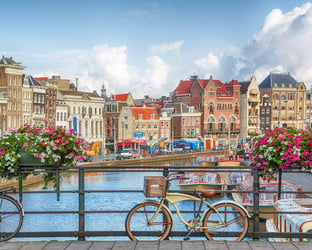As businesses expand into international markets, more and more exciting opportunities emerge, as do unforeseen challenges. Globalizing a brand goes beyond translating a logo or a slogan. Organizations also need to seamlessly bring their message and values across borders and establish universal appeal in a multitude of languages and cultures.
Even for the biggest brands, this is not always easy to achieve, and many have failed. When it comes to marketing on a global scale and maintaining your organization's tone and voice, far too often, we see organizations try taking sort cut by focusing only on translation. Yes, it's less expensive than investing in market research and investing in localization and a native language translator. However, investing in native translators and ensuring your brand is localized to your audience pays dividends. Culturally adapted content for each target market will save the expense of correcting mistakes later.
Always begin with market research.
No two markets are the same. The unwritten rules of etiquette, legal regulations, and consumer behaviors significantly vary by region. Thus, when you seek to adapt your brand in international marketing, you must conduct market research first and then listen to the feedback.
The goal is to become a globally-recognized and coveted brand. Sometimes companies successfully adapt their brand dramatically to meet the location of a new target market, and sometimes they miss the mark. One way to effectively navigate this process is by acknowledging the unique needs of your expansion markets.
Maintain your brand values while adapting to the international market.
1) Be Unique, Timeless, and Resistant
A brand's base identity incorporates the unique values that represent what that brand stands for and what it can deliver to the target audience. How a brand translates its character among all the international markets it operates will determine its success over time. By focusing your efforts to develop a base identity that is timeless and resistant to change while still focusing on localization for every market.
2) Broaden Your Scope
A brand's base identity goes beyond its logo and slogans. You must pay attention to how your values and mission translate overseas, making sure it is consistent with your company's base identity. Broaden your scope of focus to include the core values of your business.
3) Beware of the Internet
The Internet and ever-increasing consumer travel create a challenge to maintain separate local brand identities overseas. If your home-based audience encounters a vastly different version of your brand overseas, you may lose integrity in their eyes. Be sure that your brand's global presence will not undermine your home market.
Avoid international marketing translation blunders.
Don't learn the hard way as the following global chains did.
Nike
A few years ago, Nike, a global sportswear giant, released a line of patterned leggings inspired by southwest Pacific traditional tattoos. Protests ignited and petitions in New Zealand and Australia because the designs were seen as exploitative as they were too similar to the traditional tattoos worn by Samoan men. Nike pulled the product in response.
Starbucks
To appeal to the culture of Saudi Arabia, Starbucks adapted its logo by showing only the mermaid's crown. Consequently, their home audience admonished this change, accusing them of catering to a misogynist culture.
Parker Pens
While the slogan "It won't leak in your pocket and embarrass you" probably isn't the best company slogan ever conceived, when Parker Pens expanded to Spain, things the marketing took a turn for the worse. Missing the mark with both their localization and translation, Parker Pens Spanish slogan became "It won't leak in your pocket and make you pregnant."
International marketing done right!
McDonald's
McDonald's does not focus its base identity on putting out identical burgers in all its franchise outlets. Instead, the brand reflects the standards of value and service that surpass local menu offerings. McDonald's effectively illustrates its brand identity by adapting its menu overseas to fit into each unique culture.
Redbull
Did you know that Redbull isn't an American brand? As an Austrian brand, Redbull has focused its event sponsorship on local events in every market. From motor racing in the US to air racing in the UK, Redbull goes the extra mile to localize marketing with grassroots efforts worldwide. Even Redbull's packaging is international, not appearing distinct to any particular country.
Over to you.
Don't wait until after you've made a costly mistake in translation to turn to a professional translation service. The translation of your marketing materials must be localized to the target culture.
Native-speaking language experts should be involved in the strategic and creative process to make sure your product's brand stands out in any market and successfully globalize. These experts can make simple adjustments to the campaign's wording or images to adapt to the locale and to accurately reflect your brand's base identity.
If you are ready to capture consumers in new markets and for your business to thrive in a language that speaks to a culture of people, contact LinguaLinx today.








